
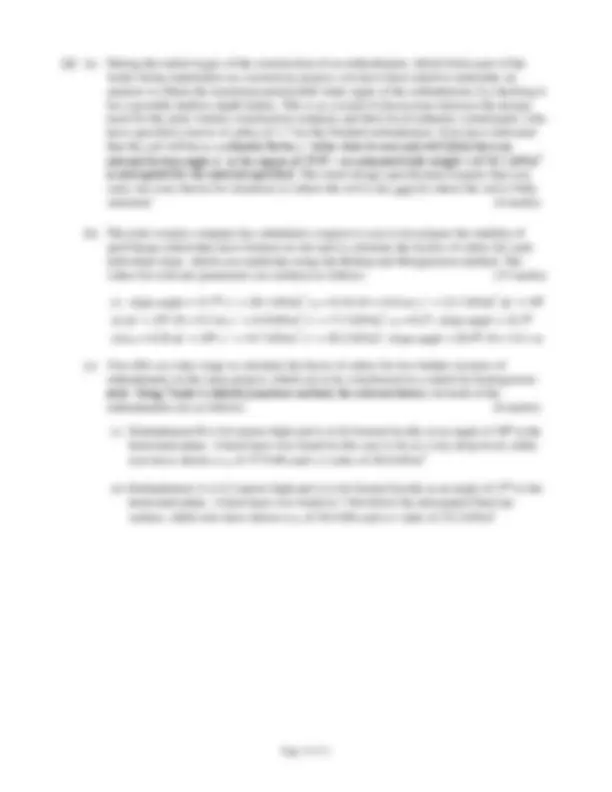
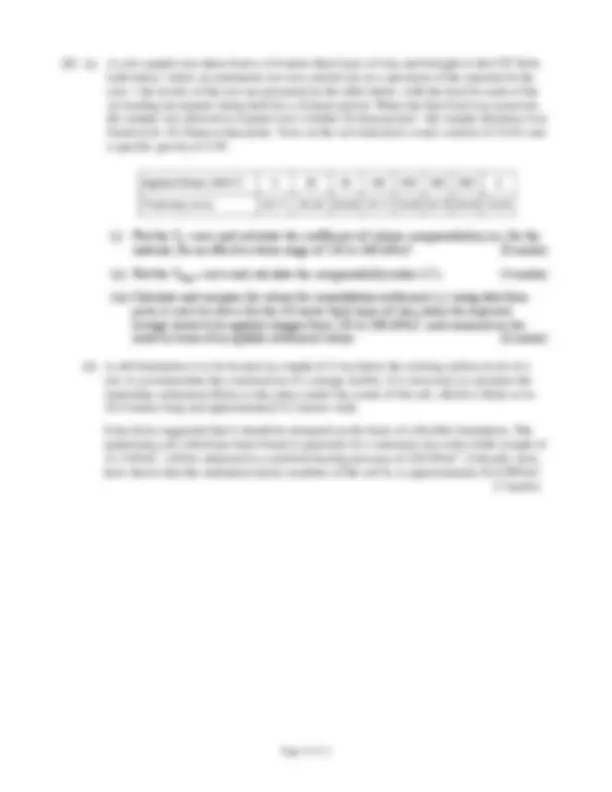
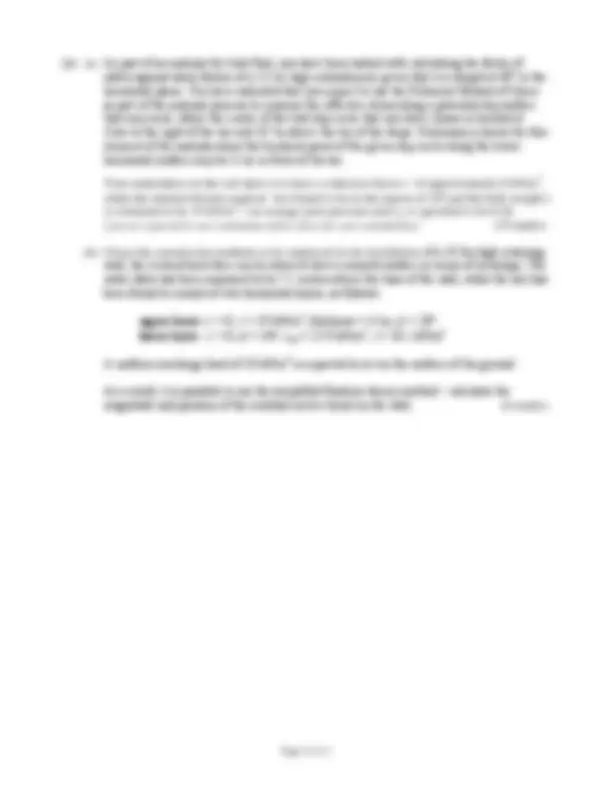
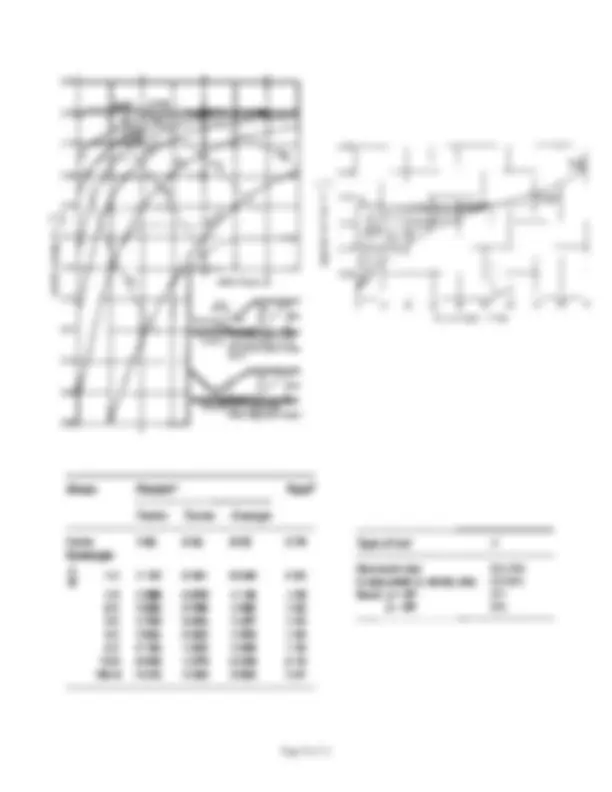
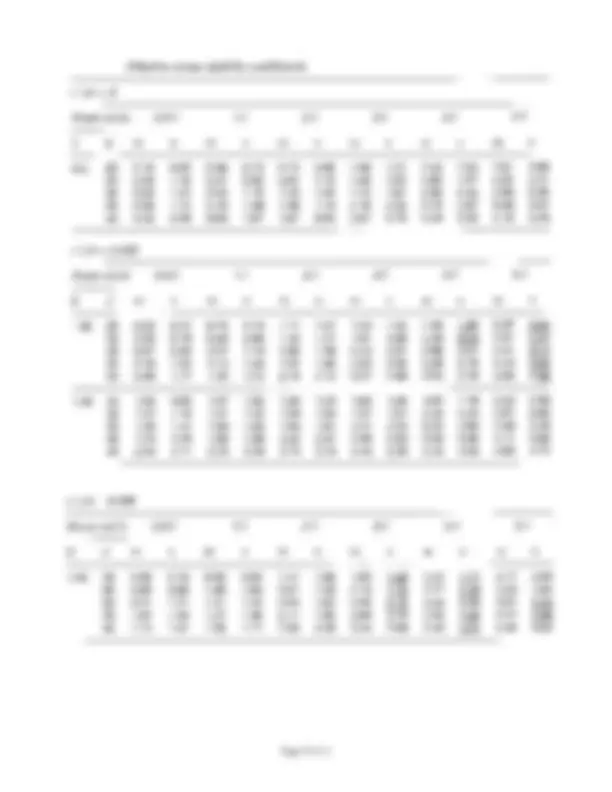
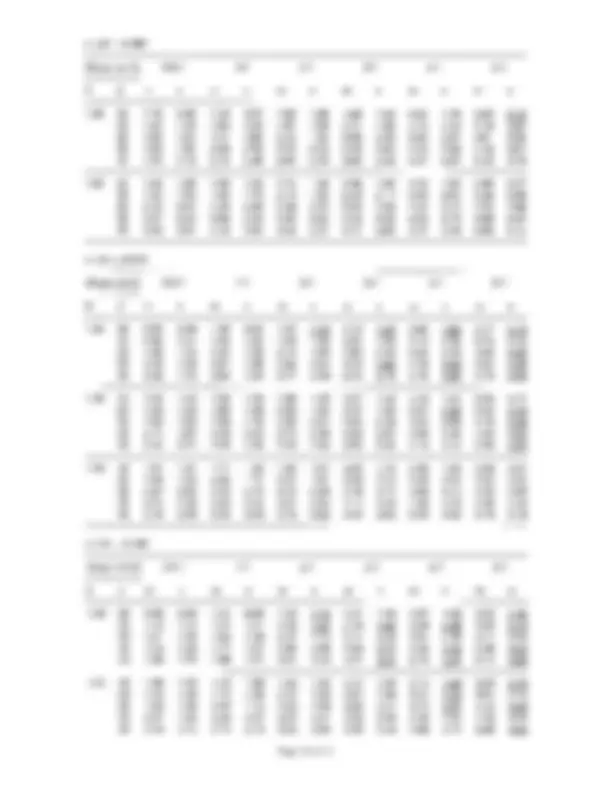


Study with the several resources on Docsity

Earn points by helping other students or get them with a premium plan


Prepare for your exams
Study with the several resources on Docsity

Earn points to download
Earn points by helping other students or get them with a premium plan
Community
Ask the community for help and clear up your study doubts
Discover the best universities in your country according to Docsity users
Free resources
Download our free guides on studying techniques, anxiety management strategies, and thesis advice from Docsity tutors
Main points of this past exam are: Taylor’s Stability Numbers Method, Breakout Point, Maximum Slope Angle, Bearing Capacity, Unit Weight of Concrete, Permissible Slope Angle, Joint Venture Company, Horizontal Plane
Typology: Exams
1 / 11

This page cannot be seen from the preview
Don't miss anything!







Semester 1 Examinations 2011/
Module Code: CIVL
School: School of Building and Civil Engineering
Programme Title: Bachelor of Engineering (Honours) in Structural Engineering
Programme Code: CSTRU_8_Y
External Examiner(s): Mr J. O’Mahony, Dr M. Richardson Internal Examiner(s): Mr D. Cadogan
Instructions: Answer four (4) out of five (5) questions
Duration: 2 hours
Sitting: Winter 2011
Requirements for this examination: Graph paper
Note to Candidates: Please check the Programme Title and the Module Title to ensure that you have received the correct examination paper. If in doubt please contact an Invigilator.
Q1. (a) Using Taylor’s stability numbers method, calculate the maximum slope angle for each of the following cuttings, and calculate the breakout point in front of the toe: (4 marks)
(i) = 20.3 kN/m^2 ; cu = 33 kPa; H = 6.9 m; FoS = 1.5; hard layer 13.2 m below surface (ii) FoS = 1.7; cu = 38 kPa; H = 10.2 m; hard layer 17 m below surface level; = 21 kN/m^2
(b) You are required to check the stability of a concrete retaining wall (in terms of sliding , overturning and bearing capacity ) which has been specified for use at a location within a recreational park, where the final soil surface is anticipated to lie at an angle of about 18 to the horizontal. This area above the wall is to be fenced off on a permanent basis for safety reasons, such that for design purposes it can be taken that there will be no surcharge applied in that area. This wall design has been chosen as the water table has been found to be well below the level of the base of the wall. Tests have shown that the soil behind the wall is a clayey gravelly sand, which has a cohesion c value of zero, an internal friction angle of 31.3 and a bulk weight of 19.8 kN/m^3. The unit weight of concrete can be taken as 24 kN/m^3 for design purposes. (21 marks)
5. 2 m
4. 3 m^0.^9 m
9. 6 m
Q3. (a) A core sample was taken from a 4.8 metre thick layer of clay and brought to the CIT Soils Laboratory, where an oedometer test was carried out on a specimen of the material in the core – the results of this test are presented in the table below, with the load for each of the six loading increments being held for a 24-hour period. When the final load was removed, the sample was allowed to expand over a further 24-hour period – the sample thickness was found to be 18.34mm at that point. Tests on the soil indicated a water content of 33.6% and a specific gravity of 2.49.
Applied Stress (kN/m^2 ) 0 25 50 100 200 400 800 0
Thickness (mm) 20.71 20.33 20.06 19.71 19.22 18.79 18.33 19.
(i) Plot the e/ curve and calculate the coefficient of volume compressibility ( mv ) for the material, for an effective stress range of 220 to 340 kN/m^2. (8 marks)
(ii) Plot the e/log curve and calculate the compressibility index ( Cc ). (4 marks)
(iii) Calculate and compare the values for consolidation settlement ( sc ) using data from parts (i) and (ii) above for the 4.8 metre thick layer of clay, when the expected average stress to be applied changes from 220 to 340 kN/m^2 , and comment on the result in terms of acceptable settlement values. (6 marks)
(b) A raft foundation is to be located at a depth of 2.1m below the existing surface level of a site, to accommodate the construction of a storage facility. It is necessary to calculate the immediate settlement likely to take place under the centre of the raft, which is likely to be 18.4 metres long and approximately 8.2 metres wide.
It has been suggested that it should be designed on the basis of a flexible foundation. The underlying soil, which has been found to generally be a saturated clay with a bulk weight of 21.3 kN/m^3 , will be subjected to a uniform bearing pressure of 228 kN/m^2. Critically, tests have shown that the undrained elastic modulus of the soil Eu is approximately 42.8 MN/m^2. (7 marks)
Q4. (a) As part of an analysis for Irish Rail, you have been tasked with calculating the factor of safety against shear failure of a 13.2m high embankment, given that it is sloped at 30° to the horizontal plane. You have indicated that you expect to use the Fellenius Method of Slices as part of the analysis process to examine the effective stress along a potential slip surface that may exist, where the centre of the trial slip circle that you have chosen is located at 3.6m to the right of the toe and 18.7m above the toe of the slope. Preliminary checks for this element of the analysis show the breakout point of the given slip circle along the lower horizontal surface may be 3.2m in front of the toe.
Tests undertaken on the soil show it to have a cohesion factor c´ of approximately 8 kN/m^2 , while the internal friction angle ´ was found to be in the region of 32 and the bulk weight is estimated to be 19 kN/m^3 – an average pore pressure ratio ru is specified to be 0.28. (you are expected to use a minimum of five slices for your calculations) (19 marks)
(b) Given the construction methods to be employed in the installation of a 10.3m high retaining wall, the vertical back face can be taken to have a smooth surface in terms of its design. The water table has been measured to be 5.1 metres above the base of the wall, while the soil has been found to consist of two horizontal layers, as follows:
upper layer: c' = 0; = 19 kN/m^3 ; thickness = 4.2m; ' = 28 lower layer: c' = 0; ' = 34; sat = 22.9 kN/m^3 ; = 20.1 kN/m^3
A uniform surcharge load of 18 kN/m^2 is expected to act on the surface of the ground.
As a result, it is possible to use the simplified Rankine theory method – calculate the magnitude and position of the resultant active thrust on the wall. (6 marks)
Useful Formulae and Charts Geotechnical Engineering Winter 2011
1. qA = 2
W sin
c l tan W(cos rusec )
0
e h
h
10. mv = ( 1 )
e 0
e
11. Cc =
log
e =
0
1
0 1
log
e e
13. sc = 0 0
1 0
log( ) ( 1 )
e
Cc
15. AC = AB x 16. AB =
18. Ka =
2
2
sin( ).sin( )
sin( ).sin( ) sin .sin( ) 1
sin( ).cos
sin
sin
tan
sin cos
tan
tan 1
z
wh
p u
i (^) E I
qB( 1 ) s
sin. cos.
Ka